Jaw Shaping in Ho Chi Minh City
Search and Compare the Best Clinics and Doctors at the Lowest Prices for Jaw Shaping in Ho Chi Minh City

Find the best clinics for Jaw Shaping in Ho Chi Minh City
With Medijump you can browse 3 facilities offering Jaw Shaping procedures in Ho Chi Minh City. The cheapest price available is $2,600 in Ho Chi Minh City
Jaw Shaping in Vietnam
Price: $ 2,600
Jaw Shaping in Ho Chi Minh City
Price: $ 2,600
Jaw Shaping in Da Nang
Price: $ 15,000,000
Malaysia offers the best prices Worldwide
Price: $ 672
From 20 verified reviews
Camila Ponte-Álvarez, 05 March 2023
Happy with my new smile. Everyone at the clinic, receptionists, assistants, drivers, doctors were exceptionally attentive, kind, helpful and lovely people. High end equipment, they know what they're doing. Only thing! (Not bad just wish I had a heads up) forgeiners - be prepared for the bank card surcharge. Thank you everyone at East Rose Dental!
From 15 verified reviews
Trung Hoang, 21 September 2019
The eyelid nose in GNG is very full, the height is high enough so it looks very natural
Dr Nhan Ho Aesthetic and Plastic Surgery, can be found in District 5, Ho Chi Minh City, Vietnam and offers its patients Jaw Shaping procedures as well as 14 other procedures, across 2 different procedure categories. The price of a Jaw Shaping procedure varies from $2,600 to $3,000, and the average price is around $15,000,867. Many medical professionals work at the Clinic, with 12 in total, and Dr Nhan Ho Aesthetic and Plastic Surgery is not accredited by any recognised accreditations institutions.
Compare Before & After Photos of _procedure_photos.phpJaw Shaping
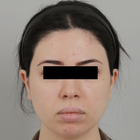
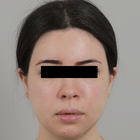
Front view

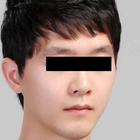
Front view
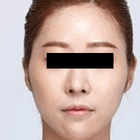
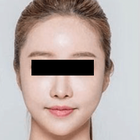
Front view
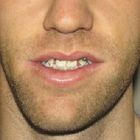

Front view
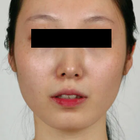
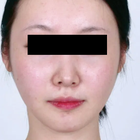
Front view
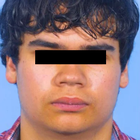
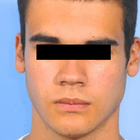
Front view

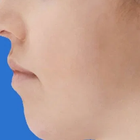
Full-side view
WHY US?
At Medijump, we're making medical easy. You can search, compare, discuss, and book your medical all in one place. We open the door to the best medical providers worldwide, saving you time and energy along the way, and it's all for FREE, no hidden fees, and no price markups guaranteed. So what are you waiting for?

Free

Best Price

Widest Selection

Risk-Free
What you need to know about Jaw Shaping in Ho Chi Minh City
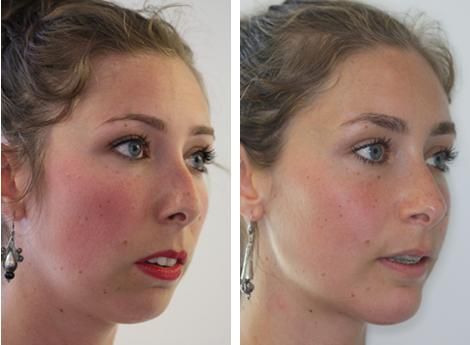
Also known as Mandibular Angle Reduction, V Line Surgery or Jawline Surgery, Jaw Shaping Surgery is performed with the purpose of narrowing the lower part of the face, with particular emphasis on the mandible (lower jaw) and the muscular attachments.
A wide jaw angle can be caused by enlarged muscle, bone, or a combination of the two. A prominent jaw angle or square jaw is considered a masculine trait, particularly in Asian countries. Therefore, many people opt for surgical correction to get their desired look. The surgery can shorten an overly long jaw and change a square-shaped face to an oval shape. Some people with temporomandibular joint (TMJ) disorders, uneven jaws, or jaws that causes pain when chewing might also undergo this surgery to correct pain.
There are several critical elements involved in the surgery, including the angles of the jaw, the body of the mandible, and the shape of the chin. While the procedure is typically performed on women with a square jawline who want a more feminine look, it can be done on both men and women. However, this procedure may not work for people who want to feminize a male’s face since males usually have a taller and longer face. Therefore, a V Line Surgery would only make a face look more elongated.
What does a Jaw Shaping Procedure Involve?
Various developmental, congenital, or some rare disorders such as acromegaly can cause enlarged mandibles, which can be corrected by Jawline Surgery. It is ideal for those with overly square or U-shaped jawline, overly manly jaw shape, bloated cheeks, and double chin. If you are considering V line surgery, you will need to be in a good state of physical and mental health.
Prior to the surgery, you will be examined by X-rays and 3D CT scans. Your surgeon will analyze and evaluate the overall structure of your jaw to create a plan to produce the desired result. You will also need to undergo medical tests such as ECGs to ensure that you don’t have a condition that may put you in danger or compromise the success of the surgery.
Surgery is performed under general anesthetic through tracheal intubation and leaves minimal scarring. You will need to fast for 8 hours before the surgery. Oscillating saws are used to reshape the jaw. The surgery can be performed inside the mouth (intraoral) or from outside the mouth (postauricular). The intraoral approach is the most widely used method. With this approach, an incision is made between the gum and the back of the cheek next to the jaw. Then, the jawline is carved out into their desired shape. A portion of the masseter muscle is shaved off, and the outer portion of the bone is chipped off. This approach is best for patients who aim to narrow their frontal view since the change is subtle and natural.
If the patient wants to change the appearance of the jaw angle from a side view, the overall contour of the bone will need to be changed. This means that the patient needs a full-thickness bone removal. Although it can be done through the intraoral approach, the surgeon’s view during this approach is very limited, which can decrease the precision of the procedure. Therefore, the best approach is from outside of the mouth or postauricular. To get direct access to the bone, the surgeon makes an incision hidden around the ear. This approach can remove a more substantial amount of bone. The recovery time using this approach is also much shorter than the intraoral approach since the swelling stays confined to the neck area.
How Long Should I Stay in Ho Chi Minh City for a Jaw Shaping Procedure?
The typical length of time for Jaw Shaping is usually around 2 hours. Nevertheless, you have to stay in the hospital for around one to two days for initial recovery where you will be monitored to make sure everything is fine. After being discharged, plan to stay in the Ho Chi Minh City for 10 to 14 days or until the surgeon says you can go home. The stitches are generally removed within two weeks after surgery, though this may vary from patient to patient.
What's the Recovery Time for Jaw Shaping Procedures in Ho Chi Minh City?
Immediately after the surgery, you will need to wear a facial mask that presses tightly against the skin around the jaw to keep the post-surgery swelling down. Also, you will not be allowed to eat foods that require chewing because it will delay the recovery and can cause bleeding. If you undergo the intraoral approach, your food intake will be limited for a considerable length of time. You may feel some swelling, numbness, and discomfort around the incision for several days, but the surgeon will prescribe medications to help with the pain.
The recovery period can be different for each individual; some people may be able to go back to their regular routines after seven to ten days, but others may need more time to fully recover. Avoid doing any vigorous activity that increases your blood pressure for several weeks, such as jogging and other exercises. Most of the visible signs, such as swelling and bruising, should disappear within a few weeks. Symptoms such as hematoma and infection are common, and will usually subside within three to six months post-surgery.
What sort of Aftercare is Required for Jaw Shaping Procedures in Ho Chi Minh City?
You must follow your surgeon aftercare instructions strictly to accelerate your recovery and minimalize possible complications. The instruction will likely include the following recommendations:
- Food intake. You may need to consume a liquid diet for a week after surgery as drinking your food is less painful and prevents trauma to the jaw area. You should be able to consume hard foods within one month.
- Oral hygiene. An antibacterial mouth rinse will keep your mouth and incision area clean, which will decrease the possibility of infection.
- Avoid tobacco and alcohol. Smoking and drinking alcohol should be avoided for a while.
- Keep the head elevated. You should keep your head elevated even when you are sleeping as it is the key to reduce swelling.
- Compression bandage. You are recommended to wear a compression bandage at all times for the first three days and while sleeping for the first week or two.
- Avoid strenuous activity. Do not do any heavy lifting or exercise for at least a month. However, do walk around and practice some gentle movement.
- Attend follow up appointments. The surgeon will check your progress to avoid any complications.
What's the Success Rate of Jaw Shaping Procedures in Ho Chi Minh City?
Jaw shaping surgery is a safe procedure when performed by a trained surgeon. Around 94% of patients express their satisfaction with this procedure. However, it is important to have realistic expectations. You should also be aware of the possible risks that this surgery may cause. These risks include infection, asymmetry, seroma, deep vein thrombosis, pulmonary embolism, and hematoma. Partial numbness of the jaw can also happen due to nerve damage.
Are there Alternatives to Jaw Shaping Procedures in Ho Chi Minh City?
If you wish to reshape your jaw but do not want to undergo surgery, there are non-invasive options available. The most popular alternatives are Botox and Dysport, which can effectively contour the jaw by relaxing the appearance of a square jaw. This procedure shrinks the masseter muscle by weakening it. These injectable can also be used to correct facial asymmetry around the jawline area. Since they are non-invasive, you can return to your daily activates right away and they offer a subtler shift in your appearance. However, these techniques are limited to cases in which the masseter is enlarged and may not work as well as V Line Surgery.
Whilst the information presented here has been accurately sourced and verified by a medical professional for its accuracy, it is still advised to consult with your doctor before pursuing a medical treatment at one of the listed medical providers
No Time?
Tell us what you're looking for and we'll reachout to the top clinics all at once
Enquire Now

Popular Procedures in Ho Chi Minh City
Prices Start From $70

Prices Start From $28

Prices Start From $1,945

Prices Start From $275

Recommended Medical Centers in Ho Chi Minh City for Jaw Shaping

- Interpreter services
- Translation service
- Religious facilities
- Medical records transfer
- Medical travel insurance
- Health insurance coordination
- TV in the room
- Safe in the room
- Phone in the room
- Private rooms for patients available

- Interpreter services
- Translation service
- Religious facilities
- Medical records transfer
- Medical travel insurance
- Health insurance coordination
- TV in the room
- Safe in the room
- Phone in the room
- Private rooms for patients available

- Interpreter services
- Translation service
- Religious facilities
- Medical records transfer
- Medical travel insurance
- Health insurance coordination
- TV in the room
- Safe in the room
- Phone in the room
- Private rooms for patients available

- Interpreter services
- Translation service
- Religious facilities
- Medical records transfer
- Medical travel insurance
- Health insurance coordination
- TV in the room
- Safe in the room
- Phone in the room
- Private rooms for patients available

- Interpreter services
- Translation service
- Religious facilities
- Medical records transfer
- Medical travel insurance
- Health insurance coordination
- TV in the room
- Safe in the room
- Phone in the room
- Private rooms for patients available

- Interpreter services
- Translation service
- Religious facilities
- Medical records transfer
- Medical travel insurance
- Health insurance coordination
- TV in the room
- Safe in the room
- Phone in the room
- Private rooms for patients available

- Interpreter services
- Translation service
- Religious facilities
- Medical records transfer
- Medical travel insurance
- Health insurance coordination
- TV in the room
- Safe in the room
- Phone in the room
- Private rooms for patients available

- Interpreter services
- Translation service
- Religious facilities
- Medical records transfer
- Medical travel insurance
- Health insurance coordination
- TV in the room
- Safe in the room
- Phone in the room
- Private rooms for patients available

- Interpreter services
- Translation service
- Religious facilities
- Medical records transfer
- Medical travel insurance
- Health insurance coordination
- TV in the room
- Safe in the room
- Phone in the room
- Private rooms for patients available

- Interpreter services
- Translation service
- Religious facilities
- Medical records transfer
- Medical travel insurance
- Health insurance coordination
- TV in the room
- Safe in the room
- Phone in the room
- Private rooms for patients available
Jaw Shaping in and around Ho Chi Minh City
About Ho Chi Minh
Ho Chi Minh City also referred to by its former name of Saigon, is Vietnam’s largest city. Although it is busy and chaotic, the city is actually teeming with wonderful shops, intriguing history, delicious food, and fantastic nightlife. While many people normally come to the city to explore its temples and museums, there’s also a growing trend of medical tourism. More and more people are coming to the city to take advantage of healthcare. One of the main reasons behind Ho Chi Minh’s emerging popularity in medical tourism is affordable prices. It’s more affordable to have any treatment performed here than in Thailand and Singapore.
Popular Parts of Ho Chi Minh
There are 19 districts in Ho Chi Minh, but the most popular one is District 1 (also known as Saigon District), which serves as the city center. Here, visitors can find bars, restaurants, cafés, and iconic landmarks. Some of the most popular attractions in this district are the Bitexco Tower Skydeck, the Independence Palace, the Notre Dame Cathedral and Post Office, Bui Vien Street, and Nguyen Hue Walking Street. Besides District 1, Chinatown or Cholon is also very popular as it is home to the biggest Chinese community in this country, and Binh Tay Market is its main draw. Full of great food, history, and wonderful sights, this area is an excellent place to wander around and have fun.
Transport in Ho Chi Minh
The main gateway to Ho Chi Minh is the Tân Sơn Nhất International Airport, which is the busiest airport in Vietnam. It serves flights to and from numerous cities in Asia, including Bangkok, Singapore, and Seoul. There are also several low-cost airlines available for budget travelers, such as VietJet Air and Jetstar Pacific Airlines. To get around the city, buses, taxis, Xe Om (motorcycle taxis), Cyclos, and Grab Taxi (similar to Uber) are available. Buses are comfortable, but taxis and Grab Taxi are the easiest way to travel around. Xe Om and Cyclos are affordable, but they tend to be suitable for short-distance trips only.
Visas in Ho Chi Minh
Vietnam allows citizens of 24 countries, including the UK, Denmark, and Cambodia, to enter and stay in the country for up to 90 days without a visa. Other nationalities need to apply for a visa. The country has an electronic visa system available for citizens of 81 countries.
Weather in Ho Chi Minh
Ho Chi Minh has a tropical monsoon climate and the average temperatures remain all year round. December to March is the dry season, with the temperatures ranging from 21°C to 34°C. May to September is the wet season, which experiences frequent rain showers. July to November is the peak period for typhoons.
Additional Info
- Local Currency: The official currency is the Vietnamese Dong (VND). 1 USD is equivalent to 23,270 VND.
- Money & Payments: ATMs are widespread. Credit cards are accepted at most hotels, but always bring cash with you. Tipping is appreciated, but not expected.
- Local Language: The official language is Vietnamese. English is widely spoken, particularly in tourist areas.
- Local Culture and Religion: The constitution provides for freedom of worship. Vietnamese folk religion is a major religion, but many people are not religious. Other religions, such as Buddhism and Christianity, are freely practiced.
- Public Holidays: New Year’s Day, Tet Holiday, Reunification Day, International Labor Day, and National Day are some of the most celebrated holidays in Ho Chi Minh.
Popular Searches
- Plastic Surgery in Thailand
- Dental Implants in Thailand
- Hair Transplant in Thailand
- Breast Augmentation Thailand
- Gastric Sleeve in Thailand
- Gender Reassignment Surgery in Thailand
- Laser Hair Removal in Bangkok
- Botox in Bangkok
- Dermatology in Bangkok
- Breast Augmentation in Bangkok
- Coolsculpting in Bangkok
- Veneers in Turkey
- Hair Transplant in Turkey
- Rhinoplasty in Turkey
- Stem Cell Therapy in Mexico
- Rhinoplasty in Mexico
- Liposuction in Mexico
- Coolsculpting in Tijuana
- Rhinoplasty in Korea
- Scar Removal in Korea
- Gastric Sleeve in Turkey
- Bone Marrow Transplant in India
- Invisalign in Malaysia
- Plastic Surgery in the Dominican Republic
- Tummy Tuck in the Dominican Republic
- Plastic and Cosmetic Surgery in Poland
- Rhinoplasty in Poland
- Hair Implant in Poland
- Dental Implants in Poland
- IVF in Turkey


